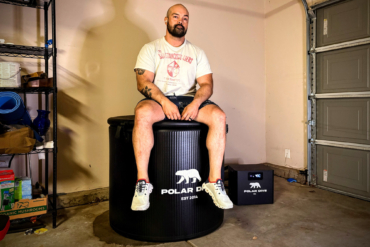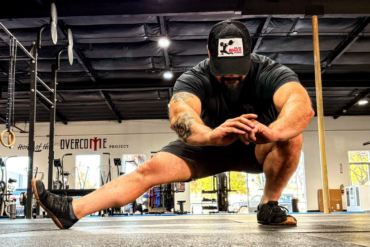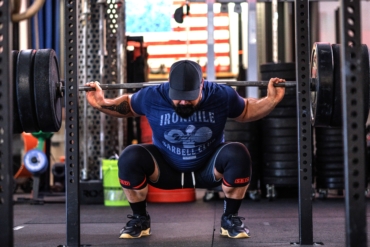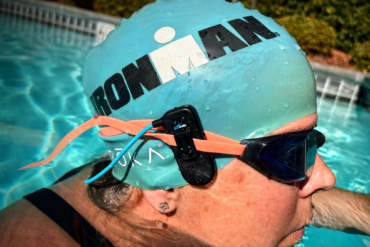Top photo credit: Henning Schlottmann
A $2 lacrosse ball can work wonders for your body and hasten recovery.
In a world of pulsating, high-powered massage guns and electric, heated foam rollers, it’s easy to assume that all recovery tools are complex and expensive. But there’s a simple, portable, and effective product that works out knots, eases tension, and costs less than a cup of 7-Eleven coffee.
Lacrosse balls are the recovery hack endurance athletes and trainers have known about for years. But only recently have these $2 toys received the attention they deserve as the easy-to-use therapy tools they are. Not quite as hard as a baseball or as soft as a tennis ball, a lacrosse ball is perfect for virtually every part of the human body.
And the best part about the lacrosse ball is that it’s convenient to travel with — just pop it in your purse or backpack, and you have a massager right at your fingertips (and a ball to play catch with if you’re bored). Whether at work or on the road, it can work out kinks and help release clenched muscles.
Lacrosse Ball Massage Exercises
1. Shoulders and Rotator Cuffs

Your shoulder blades and rotator cuffs will thank you for this two-part stretch. You may need to shift slightly to find the spots where you can feel your muscles knotted, so take your time.
- With your back against the wall, balance the lacrosse ball at the top of your shoulder blade.
- Slowly move your arm up, down, and out, keeping the ball in place.
2. Feet
If you’re a runner or hiker, the foot massage is ideal for you. Bonus: If you’re a thru-hiker, it won’t take up much space in your pack!
Simply stand with one foot on the ball, rolling it around with the pad of your foot and gently applying pressure. Think deep tissue, not torture, when it comes to picking pressure.
3. Calves
Another often-neglected spot is our calves, largely because a standard foam roller is simply too big to target these smaller muscle groups.
Place the ball under your calf and increase the pressure as you let your full weight rest on the ball, working it around with slow movements. If you find a knot, pause there and point and flex your toes a few times to contract and extend the muscles.
You can also prop the ball on a yoga block if you have a hard time pointing and flexing your foot close to the ground.
4. Glutes
Foam rollers have nothing on the power of a lacrosse ball when it comes to getting deep into the muscles of your glutes. It’s just the right size to deliver solid pressure without hurting, but it still gets local enough to really dig in.
To start, sit with one glute balanced on the lacrosse ball. Do not begin by pressing all of your weight on the ball!
Ease into it with gentle pressure toward the outside of your glutes, rolling the ball forward and backward. When you find a knot, pause and focus on relaxing your muscles around it, allowing them to unknot.
5. Back
If you spend a lot of time in a car driving between work, home, and adventure, you’re going to want to keep a lacrosse ball in your cupholder so you can DIY a back massage during the commute.
The easiest method is to pin the ball between your back and the back of a chair or car seat and make small movements, releasing your muscles so that the ball can work its magic.
If you hit a trigger point, you might be tempted to catch your breath and hold it — avoid this! As you work the ball around, particularly in sensitive areas, continue with even breaths. This will help relax the muscles and relieve knots quicker.
Things to Remember
When rolling with a lacrosse ball, remember that it’s going to be a bit more intense than a soft foam roller. You’re really digging into muscles and targeting spots that rarely get a lot of love and attention. Here are a few important points:
- Start small — five minutes of lacrosse ball rolling is enough for even the toughest athletes!
- As you go, ease into spots that feel sore. Don’t apply maximum pressure right away.
- Make small movements as you go and experiment with each position. Don’t spend to much time in any one spot; keep moving throughout this self-massage process.
- If something starts to fall asleep or feel electric, you might be on a nerve — change positions!
- And of course, after this or any massage, drink plenty of water.
Molly Hurford is a coach and journalist in love with all things cycling, running, yoga, nutrition, and all else movement-related. She’s a USA Cycling and PMBI-certified coach and a registered yoga teacher with the Yoga Alliance. She’s raced cyclocross, road, and mountain bikes, as well as triathlons from sprint distance to Ironman and running races from 5Ks to 50Ks in the mountains.
Molly is obsessed with getting more women psyched on adventure and wellness, and hosts talks and coaches clinics and camps for cyclists. She’s also the author of multiple books on cycling and nutrition, runs TheOutdoorEdit.com, and co-hosts The Consummate Athlete Podcast. Her most recent project, Shred Girls, is a young adult fiction series focused on getting girls excited about bikes.










